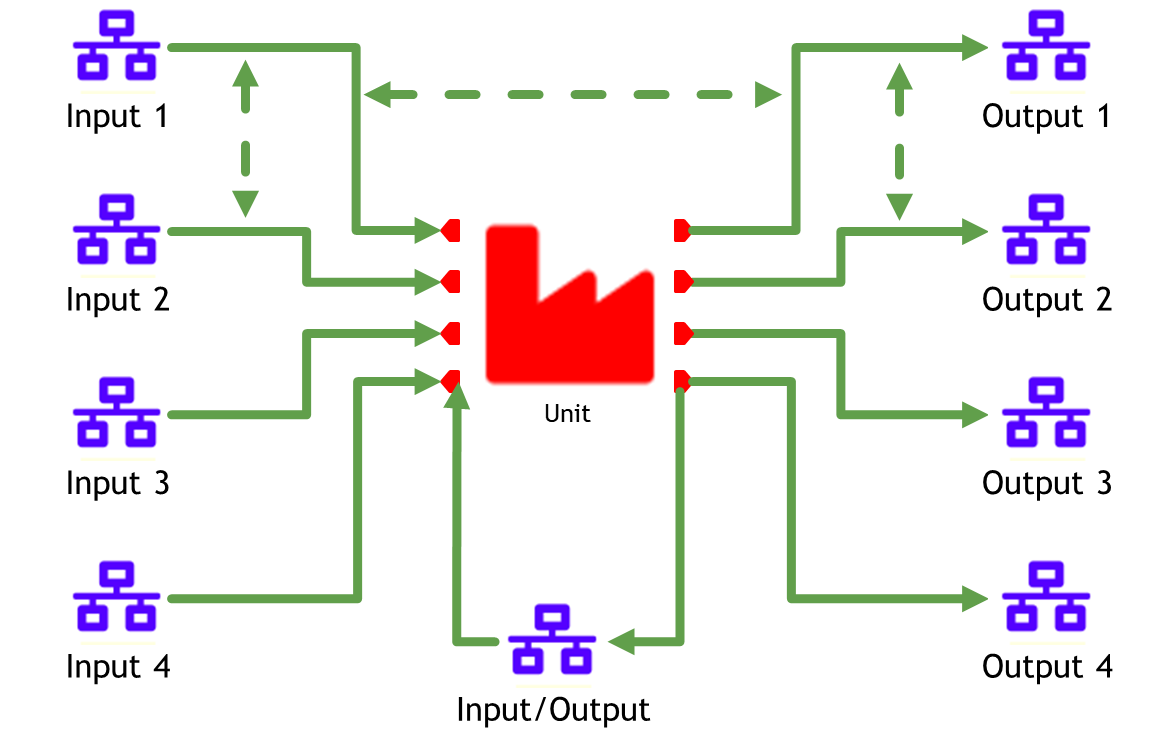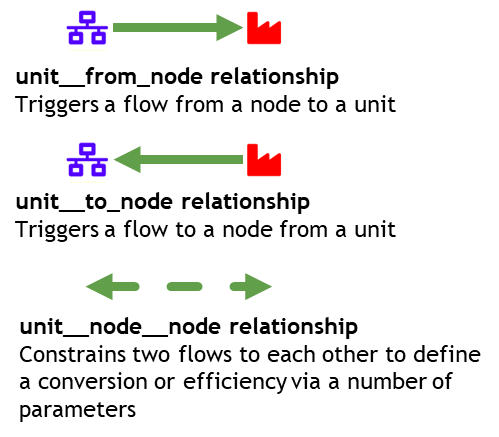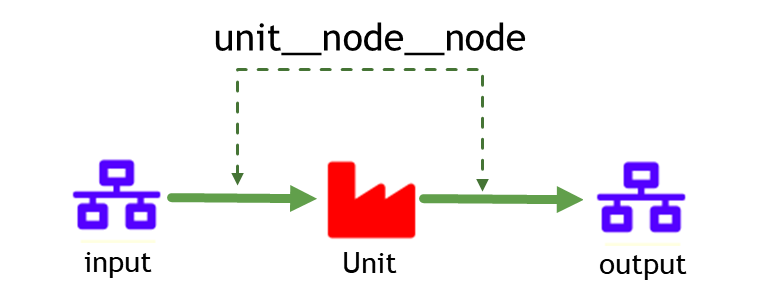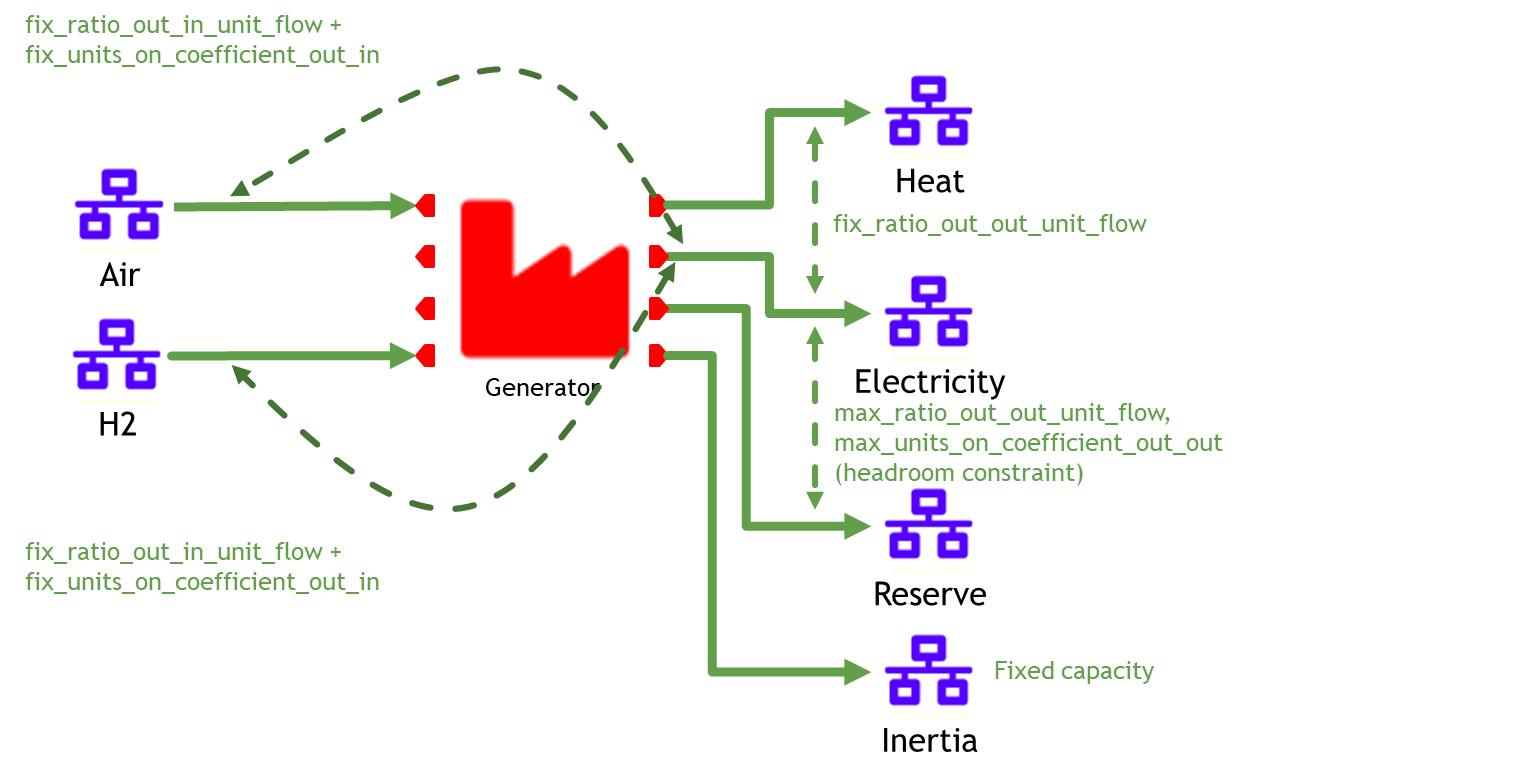How to define an efficiency
relationships between the inputs and outputs of a unit
The image below shows an overview of the possible relationships between the inputs and outputs of a unit.


The key capability requirements are:
- Easily define arbitrary numbers of input and output flows
- Easily create piecewise affine linear relationships between any two flows
- Anything more complicated can be done via user_constraints
unit__node__node relationship

The unit__node__node relationship allows you to constrain two nodes to each other via a number of different parameters.:
fix_ratio_in_out_unit_flow: equivalent to an (incremental) heat rate. Input_flow =fix_ratio_in_out_unit_flow* output_flow +fix_units_on_coefficient_in_out*units_on. It can be piecewise linear, used in conjunction withoperating_pointswith monotonically increasing coefficients (not enforced). Used in conjunction withfix_units_on_coefficient_in_outtriggers a fixed flow when the unit is online andunit_start_flowtriggers a flow on a unit start (start fuel consumption).fix_ratio_out_in_unit_flow: equivalent to an efficiency. Output_flow =fix_ratio_out_in_unit_flowx input_flow +fix_units_on_coefficient_out_in*units_on. Ordering of the nodes in theunit__node__noderelationship matters. The first node will be the output flow and the second node will be treated as the input flow (consistently with the out_in in the parameter name. A units_on coefficient is added withfix_units_on_coefficient_out_in.- In addition to
fix_ratio_in_out_unit_flowandfix_ratio_out_in_unit_flowyou have [constraint]_ratio_[direction1]_[direction2]_unit_flow where constraint can be min, max or fix and determines the sense of the constraint (max: <, min: >, fix: =) while direction1 and direction2 are used to interpret the direction of the flows involved.Insignifies an input flow to the unit whileoutsignifies an output flow from the unit. For each of these parameters, there is a corresponding [constraint]_[direction1]_[direction2]_units_on_coefficient. For example:max_ratio_in_out_unit_flowcreates the following constraint:
input_flow < max_ratio_in_out_unit_flow * output_flow + max_units_on_coefficient_in_out * units_on
real world example: Compressed Air Energy Storage
To give a feeling for why these functionalities are useful, consider the following real world example for Compressed Air Energy Storage:

known issues
That does not mean that this implementation is perfect; there are some known issues:
- Multiple ways to do the same thing (kind of)
- The ordering of nodes in
unit__node__noderelationship matters and this can be confusing - When specifying a
unit__node__noderelationship, currently toolbox doesn’t constrain a user to choosing nodes that are connected to the unit. It’s possible to create aunit__node__noderelationship between a unit and nodes where there are no flows. We actually need to define a relationship between two flows, which is really a relationship between a unit__[to/from]_node relationship and a unit__[to/from]_node relationship. - There is a long list of parameters (24 in total) [fix/max/min]_ratio_[in/out]_[in/out]_[unit_flow/units_on_coefficient]